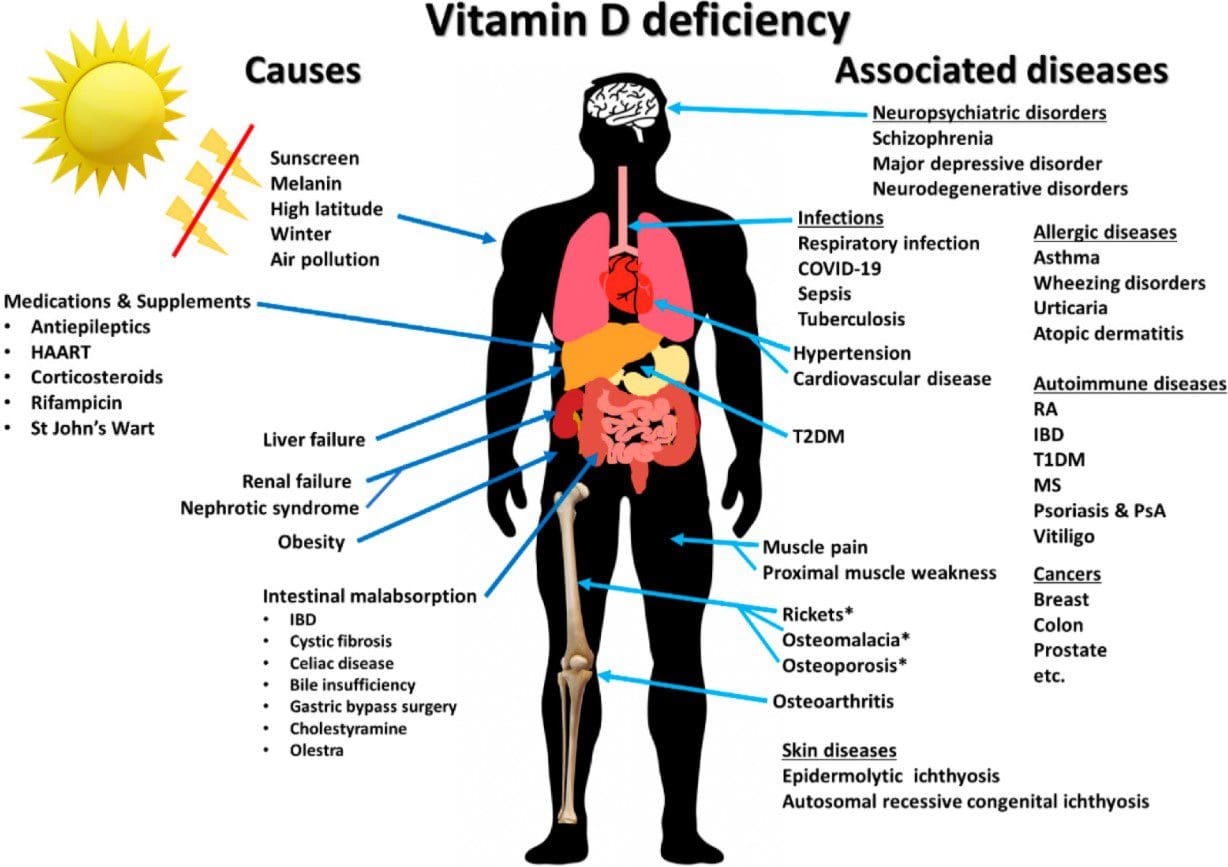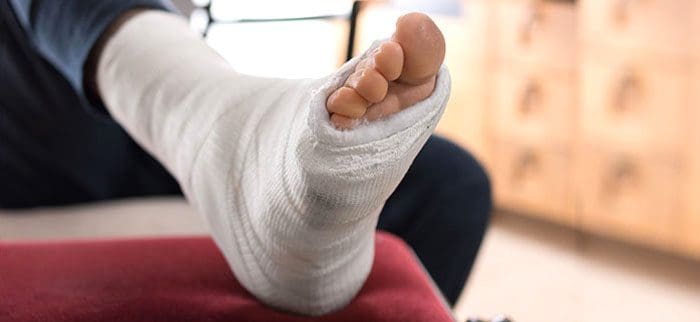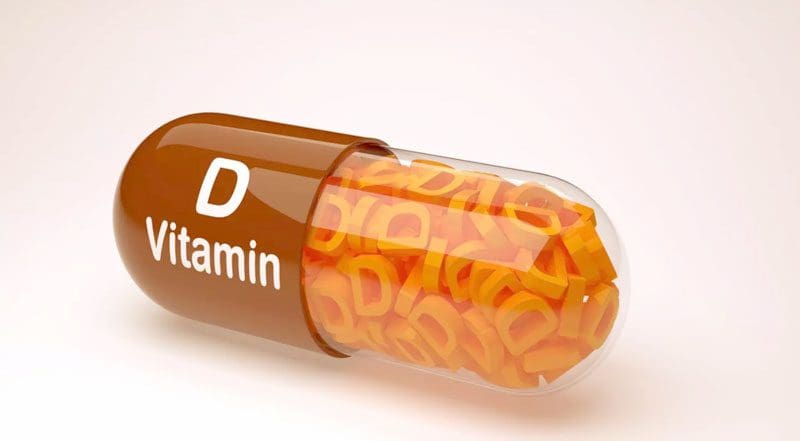Vitamin D, also known as the sunshine pill, can help keep the musculoskeletal system healthy and prevent injury by keeping the bones strong. In recent years, vitamin D has been praised for its various benefits, like helping to treat Seasonal affective disorder and in the regulation of calcium. Vitamin D deficiency can lower the effectiveness of an individual's immune system. A 2010 study confirmed a positive association between vitamin D deficiency and various types of nonspecific bone pain. Daily vitamin D supplement intake can help alleviate painful, bone-related conditions, including back pain.

Vitamin D
Vitamin D is a fat-soluble vitamin and hormone-type compound that has multiple functions in the body. Low vitamin D levels have been identified as a risk factor and associated with chronic diseases that include:
- Osteoporosis
- Fractures
- Autoimmune disorders
- Upper respiratory infections
- Rickets and asthma in children
Vitamin Supplementation Can Help
The vitamin has been proven to:
- Promote skeletal muscle metabolism
- Improve bone health
- Maintain immune function
- Reduce risk factors for certain cancers

Vitamin D supplementation provides anti-inflammatory benefits to help ease general soreness resulting from low-grade inflammation. It has also been shown to reduce exercise-induced muscle damage and muscle soreness following a hard workout.
Supplements
Taking a daily vitamin D supplement, within recommended dosages has a low risk for any side effects. Consult a doctor first and ask for a test to determine vitamin D levels. This will verify if there is a deficiency and how much vitamin D is needed each day. Getting vitamin D into the system is most common with increased sunlight exposure. But this might not be an option for certain individuals, depending on the time of year and location. This is where supplements come in.
There is not a one-size-fits-all dosage recommendation. Proper dosage depends on individual baseline vitamin D levels. In general, the recommended dietary allowance for vitamin D is 600 International Units or IU’s per day. But in certain situations, like getting older or for individuals that live where there is not a whole lot of sunlight, then a higher intake of 700 to 2,000 IU’s per day could be required to improve vitamin D insufficiency.

Side Effects
With supplements, there is the potential for side effects when taking vitamin D. Vitamin D can become toxic if taken in excess. This is why it is important to get checked/tested or consult with a physician prior to supplementation. Side effects can include:
- Fatigue
- Nausea
- Vomiting
- Poor appetite
- Constipation
- Weakness
- Heart rhythm problems
Continued Research
Additional studies are being done concerning vitamin D. Evidence supports the direct benefits of vitamin D supplementation to maintain optimal levels and for overall health.
Body Composition
Basic Keto Diet
Going keto means no carbohydrates, as it is a high fat, moderate protein, and very low carb diet. Diets that follow or are based on the ketogenic diet include:
- South Beach diet
- Atkins diet
- Modified Paleo diet
- Other low-carb diets
A keto diet can work for pretty much anyone as it suits vegan or vegetarian needs and still helps to achieve ketogenesis. The focus should be on foods that are high in fat naturally and to avoid processed foods labeled with trans-fats. Fruits that are low on the glycemic index but are still rich in fiber are great, along with lots of green, yellow, and red vegetables. A typical keto diet can include:
- Meats like pork, chicken, and beef
- Vegans will switch to vegetable protein sources
- Nuts
- Seeds
- Eggs
- High-fat dairy products like cream, whole butter, and hard cheeses
- Leafy greens
- Fish and seafood
- Olive oil
- Coconut oil
- Pure butter
- Vegetable oils rich in omega 3
Foods to Avoid:
- Any foods that are made of starch even whole grain, and organic bread/s
- Fruits that are high in sugar
- Any food that is labeled low-fat
- Vegetable oils that are rich in omega-6 and low in omega-3
Individuals add alcohol and coffee minus the cream, milk, or sugar in moderation to their diet. Individuals need to experiment with beverages and figure out what works.
Disclaimer
The information herein is not intended to replace a one-on-one relationship with a qualified health care professional, licensed physician, and is not medical advice. We encourage you to make your own health care decisions based on your research and partnership with a qualified health care professional. Our information scope is limited to chiropractic, musculoskeletal, physical medicines, wellness, sensitive health issues, functional medicine articles, topics, and discussions. We provide and present clinical collaboration with specialists from a wide array of disciplines. Each specialist is governed by their professional scope of practice and their jurisdiction of licensure. We use functional health & wellness protocols to treat and support care for the musculoskeletal system’s injuries or disorders. Our videos, posts, topics, subjects, and insights cover clinical matters, issues, and topics that relate to and support, directly or indirectly, our clinical scope of practice.* Our office has made a reasonable attempt to provide supportive citations and has identified the relevant research study or studies supporting our posts. We provide copies of supporting research studies available to regulatory boards and the public upon request. We understand that we cover matters that require an additional explanation of how it may assist in a particular care plan or treatment protocol; therefore, to further discuss the subject matter above, please feel free to ask Dr. Alex Jimenez or contact us at 915-850-0900.
Dr. Alex Jimenez DC, MSACP, CCST, IFMCP, CIFM, CTG*
email: coach@elpasofunctionalmedicine.com
phone: 915-850-0900
Licensed in Texas & New Mexico
References
Intro: The Journal of Nutrition. (April 1996) “Vitamin D and Bone Health” https://academic.oup.com/jn/article/126/suppl_4/1159S/4724783?login=true
Intro: European Journal of Clinical Nutrition. (May 2020) “Perspective: improving vitamin D status in the management of COVID-19” https://www.nature.com/articles/s41430-020-0661-0?fbclid=IwAR3yo41dvfU1HWVX_Y6z7iXFNL3X2C06A5gIfC4LcNmXzCA48A7ViMAf7N8
Intro: International Journal of Rheumatic Diseases. (August 2010) “Association between nonspecific skeletal pain and vitamin D deficiency” https://onlinelibrary.wiley.com/doi/abs/10.1111/j.1756-185X.2010.01561.x




